We have a fairly big closet at the top of our stairs that holds a bunch of stuff that doesn’t otherwise have a home: sleeping bags, board games, wrapping paper, vacuum cleaner, folding chairs, etc. It’s a mess. That’s not terrible except that we have to leave the door open because it is also the closet where I had the electrician run all my network jacks. That closet has a whole bunch of networking gear and two computers that are on 24/7. It gets way too hot if the door is closed. Some day I might build a ventilation system in there, but regardless of whether I do that, I knew I needed to build some storage that was better than our old wire frame shelves.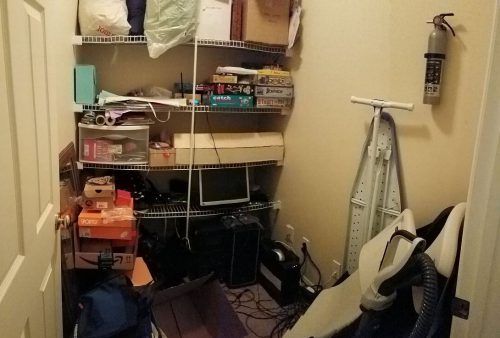 To kick things off, I cleaned out the closet, took down the wire shelves and then patched all the old screw holes from those shelves. I even sprayed on some new wall texture to hide the patches. I had a leftover half gallon of the same brown color that is used in many other places in our house and it was the perfect amount to paint the closet.
To kick things off, I cleaned out the closet, took down the wire shelves and then patched all the old screw holes from those shelves. I even sprayed on some new wall texture to hide the patches. I had a leftover half gallon of the same brown color that is used in many other places in our house and it was the perfect amount to paint the closet.
The real improvement will come from some new storage cabinets, but first I needed a solution for the mess of computer wires. It had to just sit on the floor while I was painting and I needed it out of the way for the cabinet project. So the first build in this project was a very simple set of shelves to hold the computers, routers, battery backups and other miscellaneous gear. The shelves were a quick one day build (with Elijah helping) out of a sheet of 3/4″ plywood, some poplar to hide the exposed plywood edges on the front, and a bunch of pocket screws.
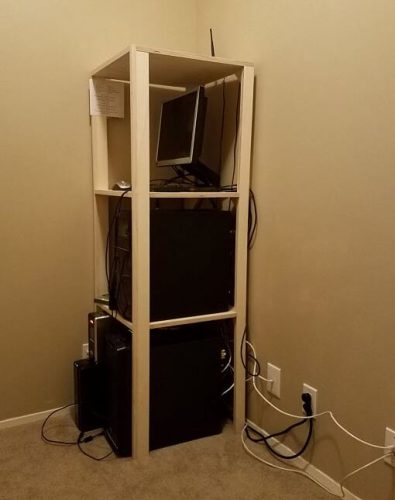 It’s not fancy, but the bulk of this will be hidden by the new closets along the same side wall anyway. And for me, this is glorious. It’s going to be so much easier to diagnose problems and I finally have all of the network jacks in our entire house connected at the same time. Nerdvana.
It’s not fancy, but the bulk of this will be hidden by the new closets along the same side wall anyway. And for me, this is glorious. It’s going to be so much easier to diagnose problems and I finally have all of the network jacks in our entire house connected at the same time. Nerdvana.
Now it’s time to build some big cabinets…

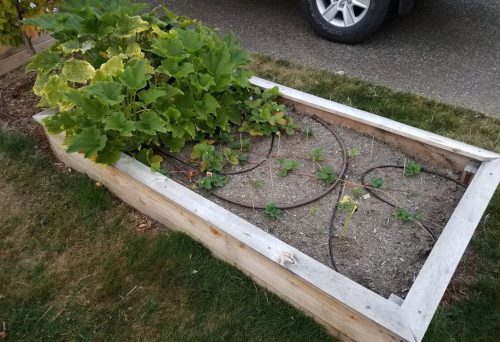

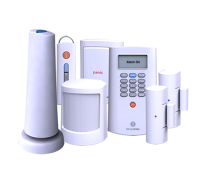


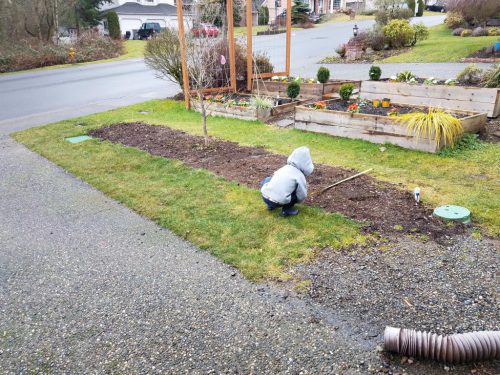
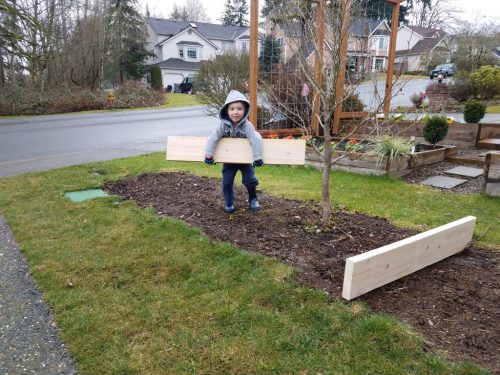
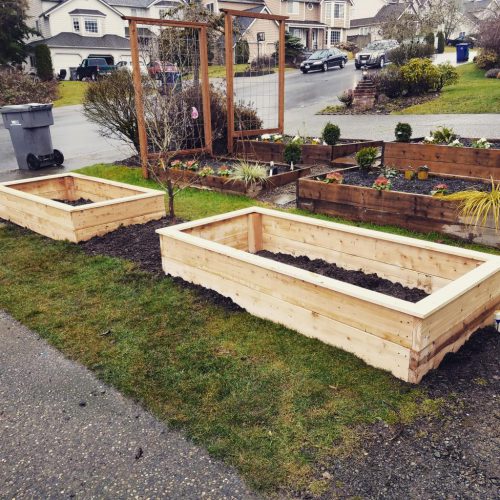
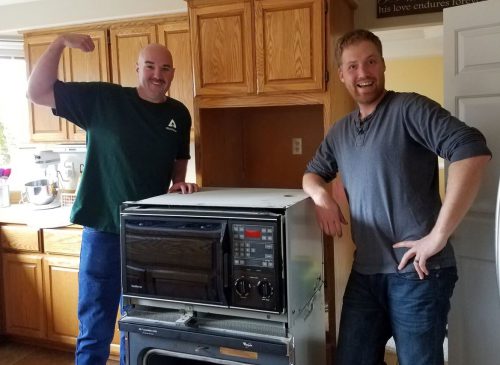
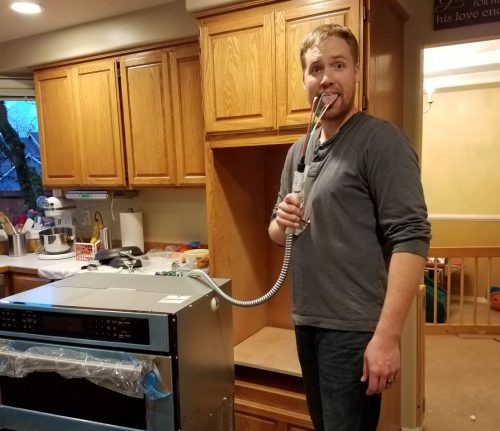

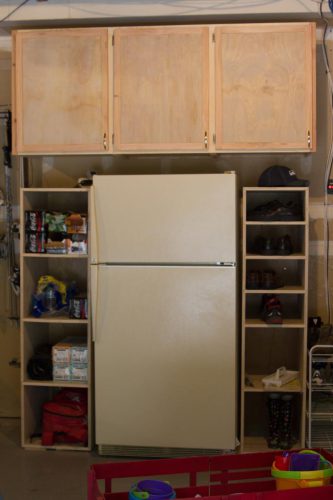
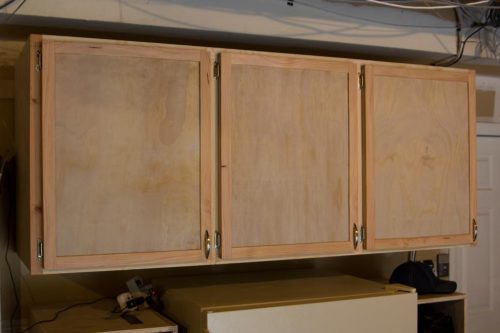
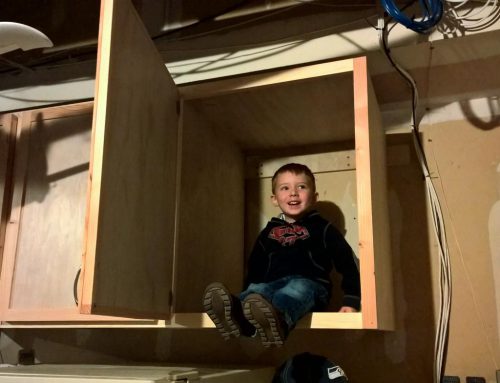
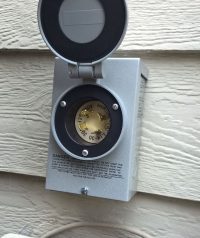 As you may remember, we’ve lost power at our house three times in the last 12 months and we’ve lost it quite a bit in the past two. We have used our new generator for the two latest incidents, and it worked great, but I’m a lazy human. Running an extension cord through the house and feeding it around the house to run various things is annoying. It was time for an upgrade.
As you may remember, we’ve lost power at our house three times in the last 12 months and we’ve lost it quite a bit in the past two. We have used our new generator for the two latest incidents, and it worked great, but I’m a lazy human. Running an extension cord through the house and feeding it around the house to run various things is annoying. It was time for an upgrade.